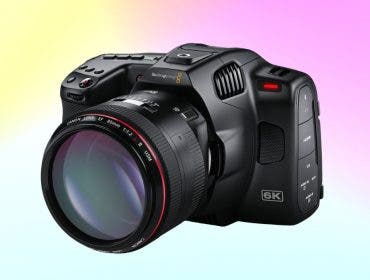Today, we’ve got some exciting news for astrophotographers shooting on Sony and Leica camera systems. Sigma has just announced a brand new lens, specifically catered towards night photography. Introducing the Sigma 14mm F1.4 DG DN | Art, available in Sony E-Mount and Leica L-Mount. Let’s review some of the best features of this new lens.
Key Features of the Sigma 14mm Lens
- 14mm focal length
- f1.4 maximum aperture
- Made for full-frame, also compatible with crop sensor
- Manual focus lock switch
- Rear filter holder
- Thorough aberration correction
- Aperture ring with click and declick Options
- Quick and quiet autofocus
- 1170g / 2.58lbs
- 19 elements in 15 groups
What Makes the Sigma 14mm Lens Special?

Best Focal Length for Astrophotography
First and foremost, the 14mm focal length makes this ultra-wide lens perfect for astrophotography. Using a wider focal length not only allows you to capture more of the sky, but it also means that you’ll be able to capture longer exposures without trailing stars in your photos. For daytime photography, you will be able to capture grand landscapes with amazing foreground elements, or even use this lens for architecture photography.

First-Ever 14mm f1.4 lens
The maximum aperture of f1.4 is particularly attractive for astrophotography. This is the world’s first 14mm F1.4 lens for full frame. The wide open aperture of f1.4 means you’ll be able to capture even more light. When paired with the 14mm focal length, you’ll be able to capture the maximum amount of light by opening the shutter speed and the aperture. This will ultimately result in cleaner images with less noise and more detail. The maximum aperture of this new Sigma lens is f.16, allowing you to achieve images with focus from front to back, create sunstars, or just reduce the amount of light entering the lens.
Outstanding Image Quality
For anyone unfamiliar with Sigma’s Art lineup of lenses, we’ve come to know and expect the absolute highest quality images from these lenses, and we would expect the new 14mm to provide excellent image quality. With 18 elements in 15 groups, including one SLD glass element, three FLD glass elements, and three aspherical lens elements, this lens allows both advanced aberration correction and sagittal coma flare. Essentially, this means you’ll avoid severely distorted stars commonly seen in many lower quality lenses. In addition, ghosting and flare are addressed via optical designs and coatings to the glass. Overall, you can expect outstanding image quality to be one of the top features in the new Sigma 14mm F1.4.

Quiet Autofocus
This lens isn’t just a tool for astrophotographers. Quick and quiet HLA autofocus achieves smooth focus swiftly and silently, ideal for video capture. On L-Mount cameras, the manual focus ring can be assigned to be linear or non-linear depending on your desired use. Additionally, this lens uses the aperture ring click switch that has become a staple of the F1.4 Art Primes from Sigma.
New Filter Holder
One of the key downsides to these ultra-wide lenses is that you generally can’t put a filter in front of the lens. Sigma has incorporated a rear filter holder, compatible with their Guide Plate GP-11, allowing you to socket your favorite lens filters behind the lens in order to still achieve your desired effect in the field.

Who Should Buy the Sigma 14mm Lens?
The most obvious use of this lens is astrophotography, or any other kind of photography performed in low light. The ultra-wide angle focal length is ideal for night photography and capturing very wide views of the sky. Using this wide-angle focal length will allow you to increase your shutter speed without having trailing stars. Pair that with the maximum aperture of f1.4 and you’ll be getting far more light than almost any other lens on the market.
Sigma has also done an excellent job reducing or eliminating the sagittal coma flare, which is where stars on the corners of your image are distorted. The advanced aberration correction is achieved even at maximum aperture throughout the entire image, with a strong emphasis on infinity focus that is so often used for night sky images. The excellent image quality paired with an outstanding focal length and maximum aperture are really what makes this lens shine for astrophotography.

High-end architecture and landscape photographers will also find this lens to be an asset in their kit. The excellent optical performance and thorough aberration correction make the Sigma 14mm f1.4 lens shine in a variety of wide-angle situations. The 14mm focal length is truly excellent for both grand landscapes and architecture photography, allowing you to capture everything in front of you in just a single shot. This is one of the widest non-fisheye lenses you’ll find on the market for full-frame cameras, and the f1.4 aperture certainly makes it shine above many of its f2.8 competitors.
Comparable Lenses
This lens is the next addition to Sigma’s highly acclaimed Art lineup of lenses. Other f1.4 prime lenses in the Art series for Sony E-Mount and Leica L-Mount include a 20mm, 24mm, 35mm, 40mm, 50mm, 85mm, and 105mm. Sigma has a variety of different Art series lenses in other maximum apertures, as well as a few zoom lenses. No matter what you shoot, the Sigma Art series has a lens with excellent optical quality for you.
Sigma also makes their lenses in other mounts, including Fujifilm X, Nikon Z, Micro Four Thirds, and Canon EF-M Mount for those shooting on different systems.

Conclusion
This is certainly an exciting announcement for the astrophotography community, seeing as this is the first 14mm F1.4 lens for full-frame Sony-E Mount and Leica-L Mount. The Sigma Art Series has an incredible reputation for making extremely high quality lenses that produce excellent images straight out of the camera. Even if you aren’t an astrophotographer, it would be hard to go wrong with this lens if an ultra-wide angle lens is in your future.
Featured Photo by Jack Fusco / Sigma






